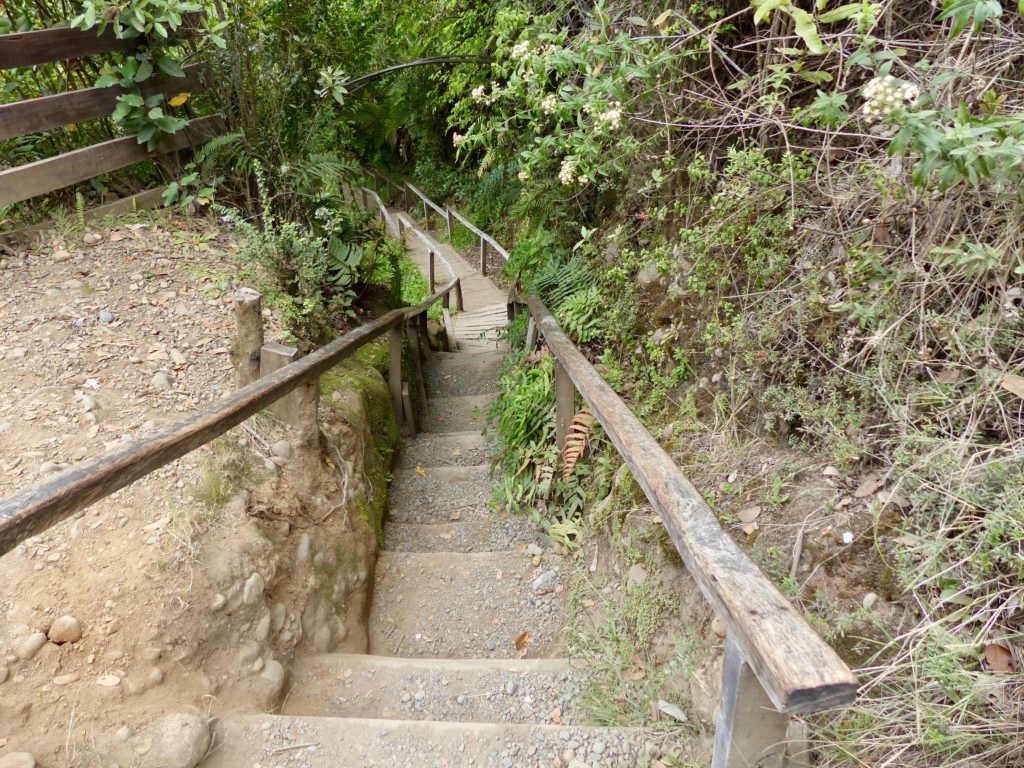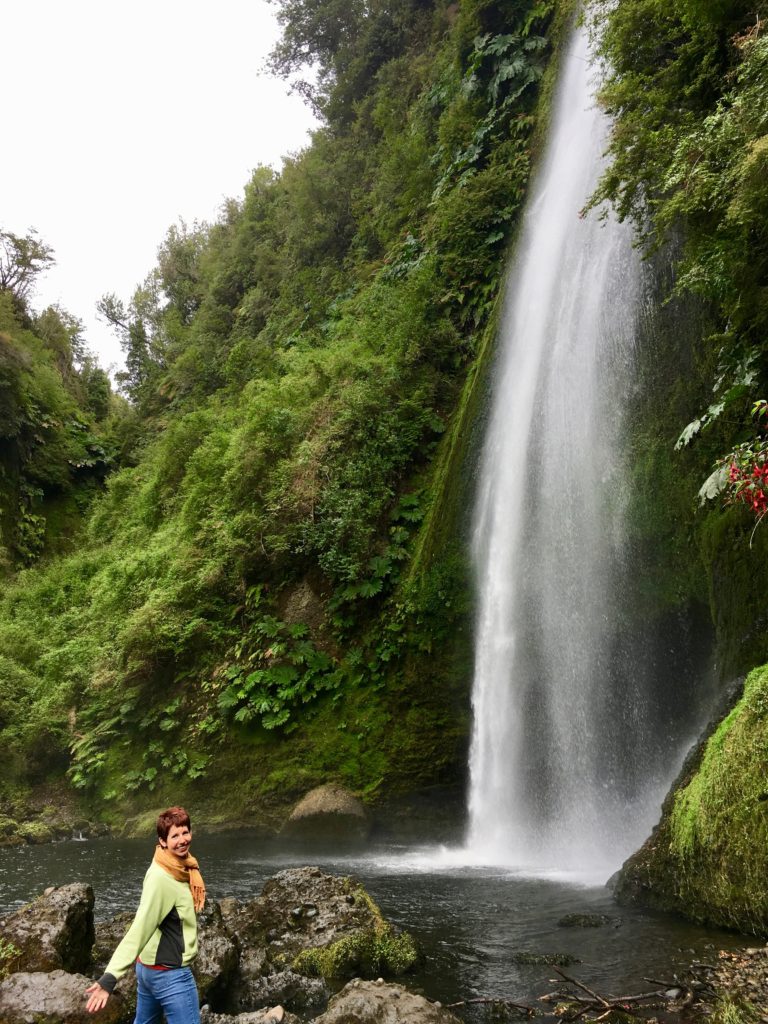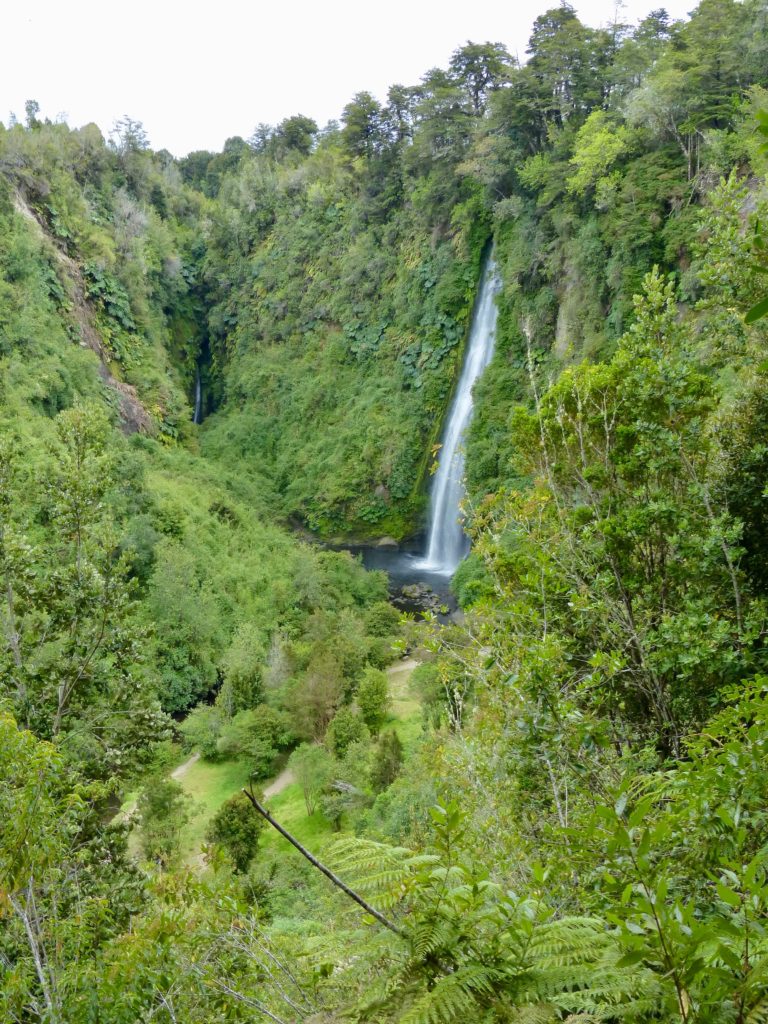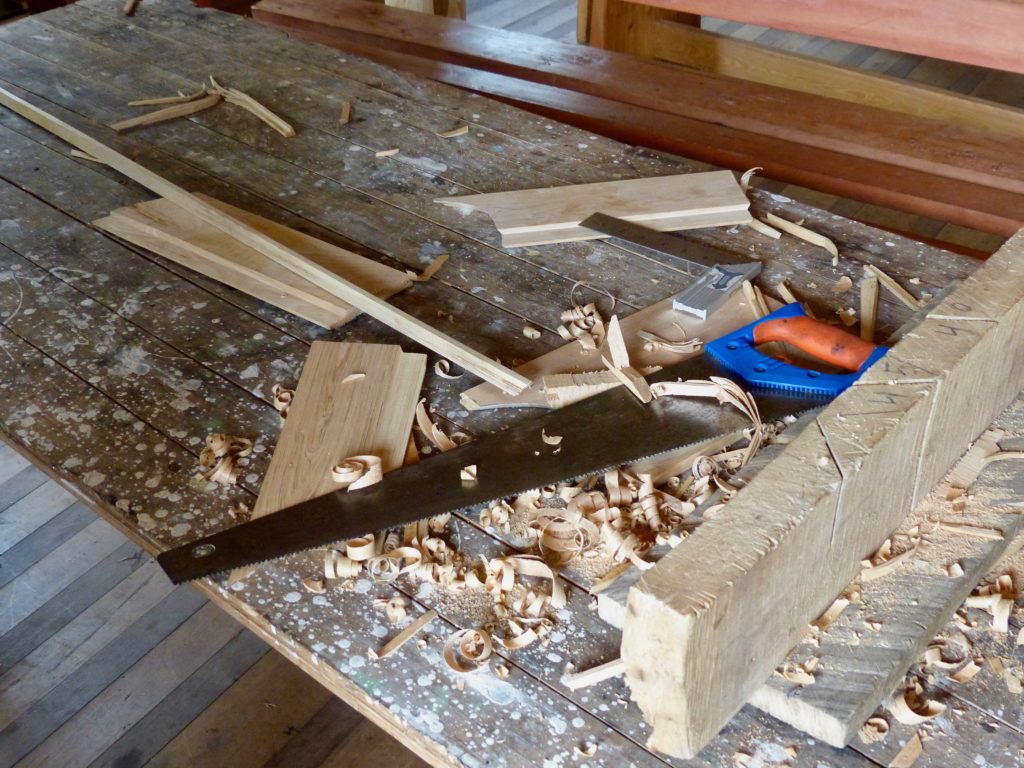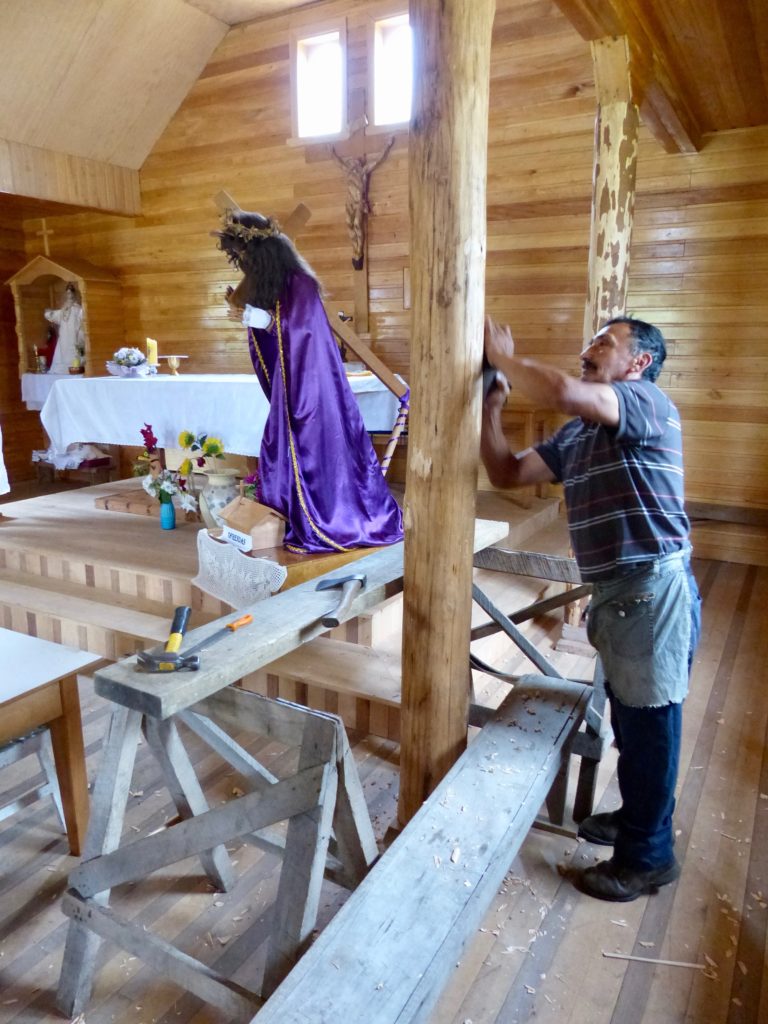On this overcast morning, we set off on a journey mapped by Jorge and texted to Brie. After a long, slow stretch of road construction, Google Maps finally told us to turn right on to a narrow rugged country road.
Fearing our Google Maps voice was developing a spiteful attitude (see yesterday’s post), I asked, “What’s our final destination?”
Brie started to say, “I actually don’t know!” But before she could get all the words out, a sign loomed over an archway: Las Cascadas de Tocoihue.
“That’s it!” she said. “The waterfall.”
We pulled in, parked, and paid a small fee. The waterfall is located on private property, and the owners have the developed a nice park with a path down to the water and a viewing platform up the hill. They also have a camping area, cabin, and restaurant. Brie and I traipsed around a bit, imagining how fun it would be to play in the water in warmer weather.

Leaving the park, Evil Google Maps Voice told us to take a sharp left, which was different than the way we had come in. At first, we were relieved, thinking this could only be better. Wrong. Here’s the map.

The blue line is the “highway.” The dotted line shows the path we took to get to the waterfall. It’s obviously so small, it doesn’t even register as a proper road. The dirt road looks so much better maintained, right? We turned on to that road and immediately realized it was full of potholes and worse. At times, one whole side was washed out, creating a sort of cliff. I drove quite a way, dipping and scraping the undercarriage, until finally we reached a point that looked unpassable. At that moment, another car approached from the other direction.
There was no way to turn around, so we decided to back down the hill and take the other route. I struggled to keep the car on level ground and ultimately backed it right into a ditch. I tried driving forward, but the wheels spun in the wet sand. I tried driving backward, but it seemed to entrench the car even more. My clutch leg shook uncontrollably as panic set in.
A man and woman got out of the other car and walked over to check on us. Speaking no Spanish, I sat in the driver’s seat and let Brie relay our dilemma. Then she got out, and the three of them tried to push the car while I gunned the engine. No luck. Eventually, I got out, too, and the man took over, alternating between shoving rocks and sticks under the wheels and climbing over the passenger seat to the driver’s side, which was smashed up against thick thorny branches. The woman also jumped in to help, scrambling through the prickly bushes to find bigger sticks. While Brie and I stood on the sidelines, the two of them cooperated, got dirty and certainly scratched to bits, and finally maneuvered the car out of the ditch. The man even backed it the rest of the way down the hill for us and then looked over the car to make sure it was fit to drive.
Tongue-tied, I felt so frustrated that I couldn’t express my appreciation in my usual effusive way. I simply said, “Muchas, muchas gracias!” with hugs and handshakes and hoped they understood how grateful we were.
The rest of the day, one or the other of us would suddenly remark, “We are so lucky they came along!” or “What would we have done?” I regretted that we didn’t get our rescuers names or email addresses. We didn’t even think to snap a photo.
We drove into the town of Quemchi, but didn’t stop to see anything, and then doubled back to Aucar, where a 500-meter wooden bridge leads to the tiny island of Isla Aucaur. A wooden arch at the entrance to the island says, “Isla de la Almas Navegantes” or “Isle of Sailors’ Souls,” a title bestowed on the island by Chilean writer Francisco Coloane. Some say Coloane thought the island looked ready to set sail at high tide; others say he was referring to the sailors buried there.
A path circles the island with signs identifying the trees and flowers. The small chapel and cemetery date to 1761. I saw some older photos of the chapel online and was surprised to see it had fallen into serious disrepair. During our visit, a carpenter was planing new pillars in the chapel, and his tools and piles of wood shavings suggested restoration work continues.
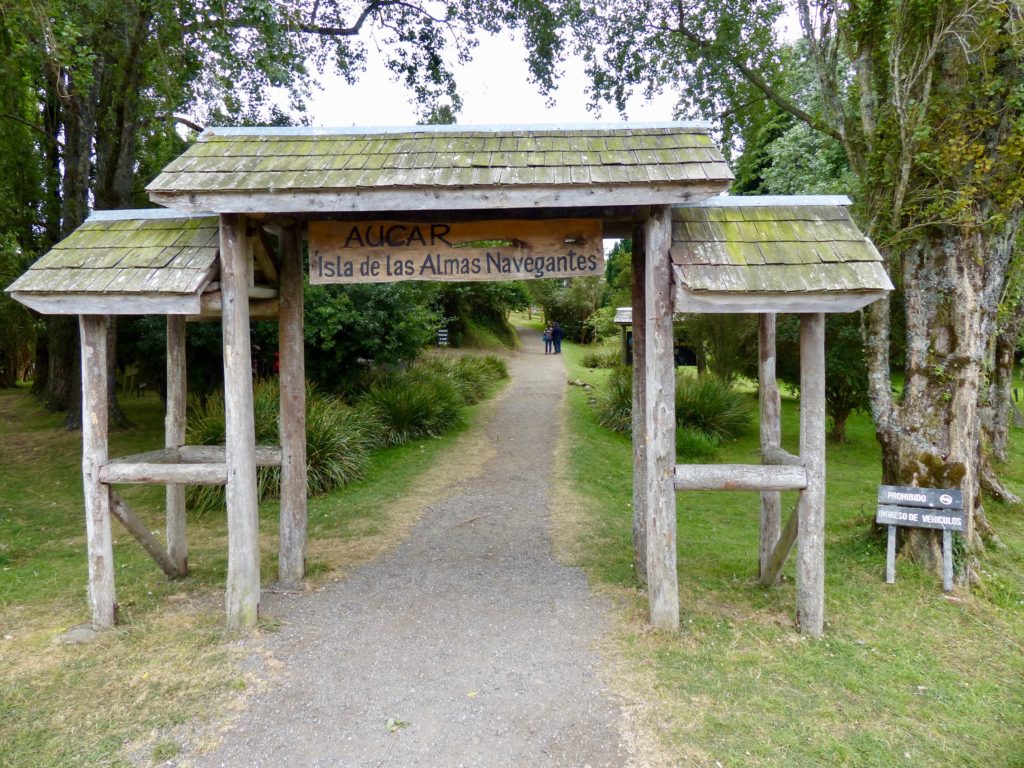
All of the churches we visited had cemeteries like this.

Leaving the church, we spotted a group of elderly tourists practically climbing a tree and pulling down tiny purple berries, called maqui. One of the men tore off a small branch and handed it to Brie. Soon her violet smile matched those of the berry pickers.
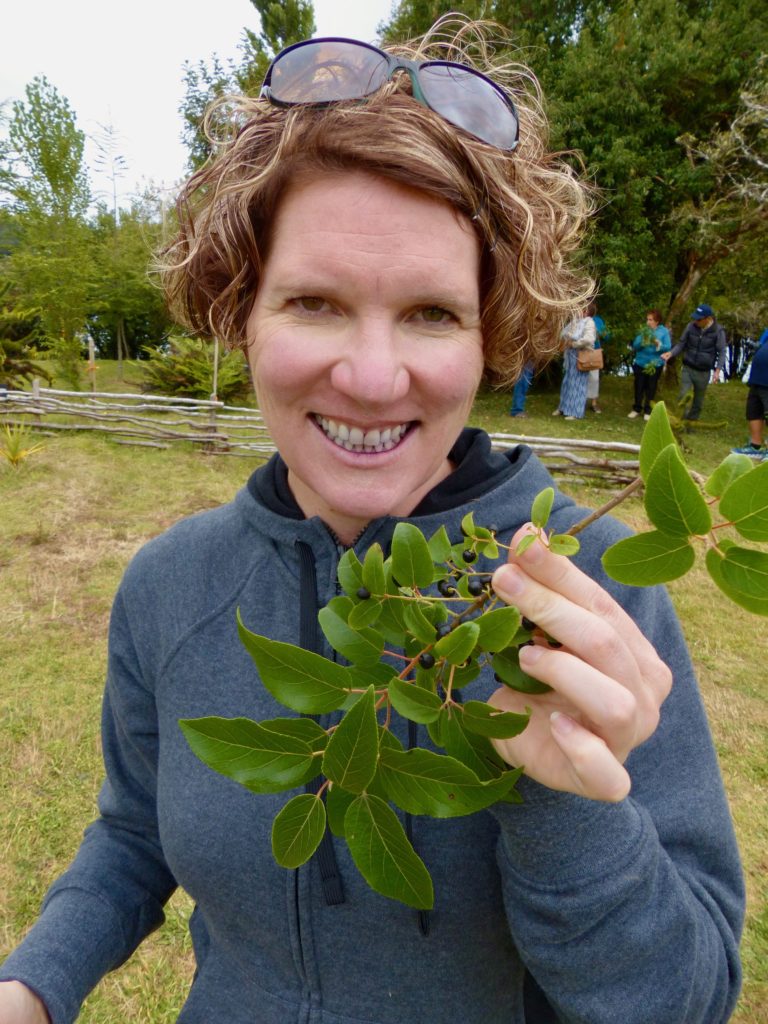
We later found out that maqui berries are one of the new hot “superfoods.” The Medicine Hunter website says this:
The Mapuche native people have been eating maqui berries and drinking their juice for centuries. And other non-native people in Chile have done the same for a very long time as well. Even in an environment in which the market is literally flooded with so-called super fruits, maqui stands head and shoulders above most of them in terms of benefits.
Quicavi was our next stop. Fodor’s Travel calls Quicavi “the center of all that is magical and mystical about Chiloé.” An evil clan protected by horrendous deformed monsters was rumored to operate out of a cave here, and the region is steeped in superstitions. I just finished a novel that takes place in Chiloé, Luke Coles and the Flower of Chiloé. It included many fantastical creatures and stories, which I thought must have been inventions of the author, Josh Walker. In fact, they are an integral part of Chilote culture. Fodor’s again:
Superstitious locals strongly advise against going anywhere near the coast to the south of town, where miles of caves extend to the village of Tenaún. They believe that witches, and evil ones at that, inhabit them. On the beaches, local lore says, are mermaids that lure fishermen to their deaths. (These are not the beautiful and benevolent Pincoya, also a legendary kelp-covered mermaid. A glimpse of her is thought to portend good fishing for the day.) Many Quicaví denizens claim to have glimpsed Chiloé’s notorious ghost ship, the Caleuche, roaming the waters on foggy nights, searching for its doomed passengers. Of course, a brief glimpse of the ship is all anyone dares admit, as legend holds that a longer gaze could spell death.
The Quicavi church was closed, and we couldn’t find any mystical caves, so we headed home. On a whim, we turned off the road to check out the Iglesia San Antonio de Colo, another church on the UNESCO World Heritage List.

There, eating lunch at a restaurant terrace overlooking the church, was our roadside assistance team! I was so happy to get their names and contact information and to thank them again for their extraordinary kindness. Brie told me Marcela asked, “What you have done if we hadn’t arrived? Just cried and prayed?” Well, yeah.
Thank you, thank you, thank you Marcela and Mauricio! (And thank you to their friend, Maria Paz, who took the picture.)
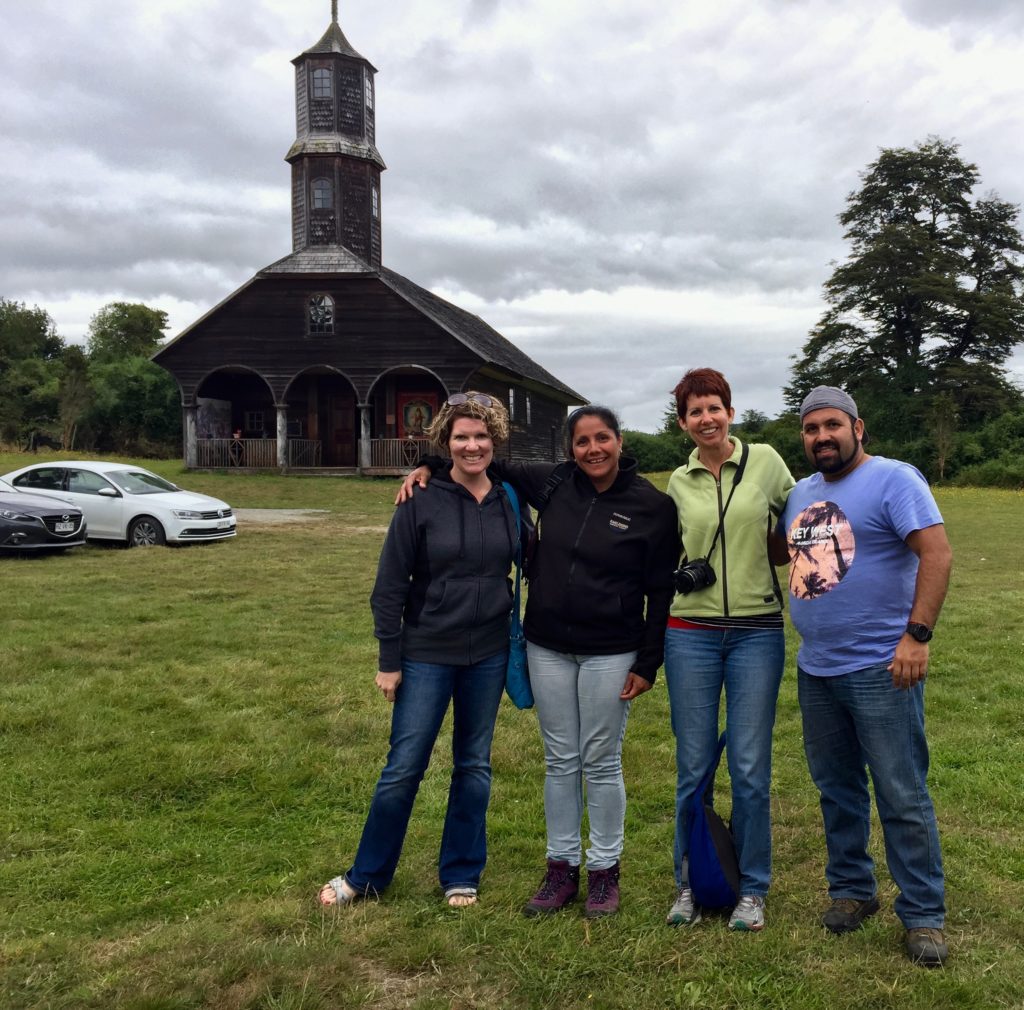
It was starting to rain as we left the church. We had eaten a big lunch of grilled fish and decided to pick up something small for dinner rather than dine at another restaurant. I did a very Chilean thing: I pulled over to the side of the road, turned on the hazards, and waited while Brie ran in to this little shop to buy empanadas. They were perfect!
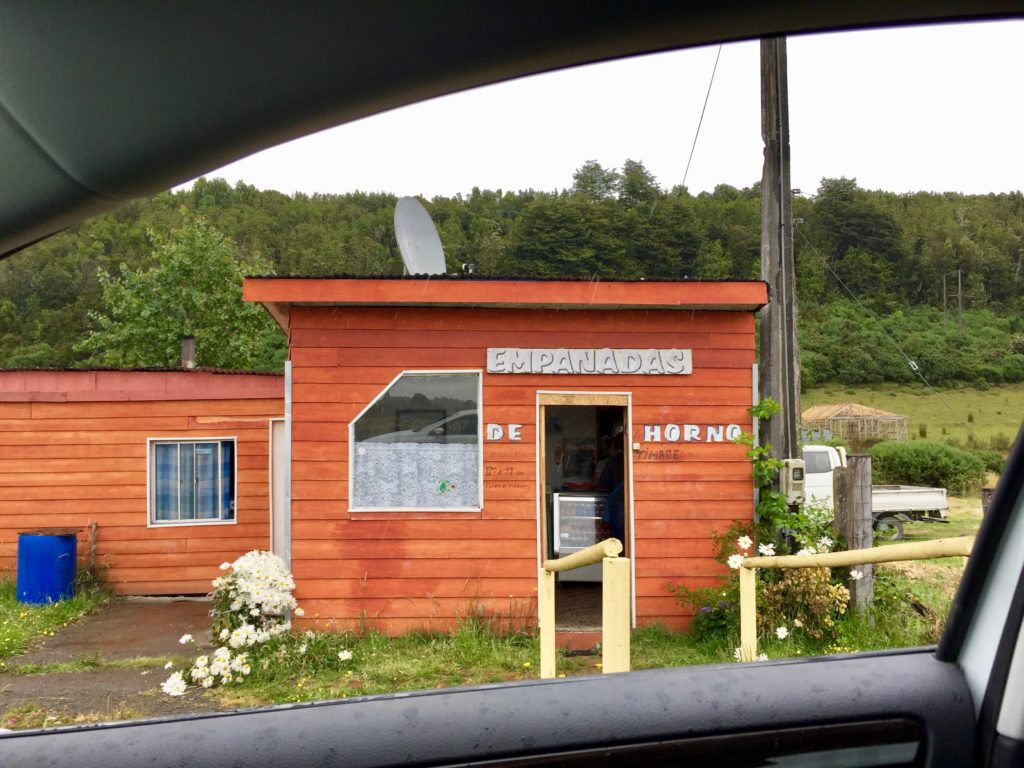
Back at the cabañas, we ate our dinner, and then Jorge built fires in each of our wood-burning stoves. We were toasty and cozy until we took off for the next day’s adventure.

